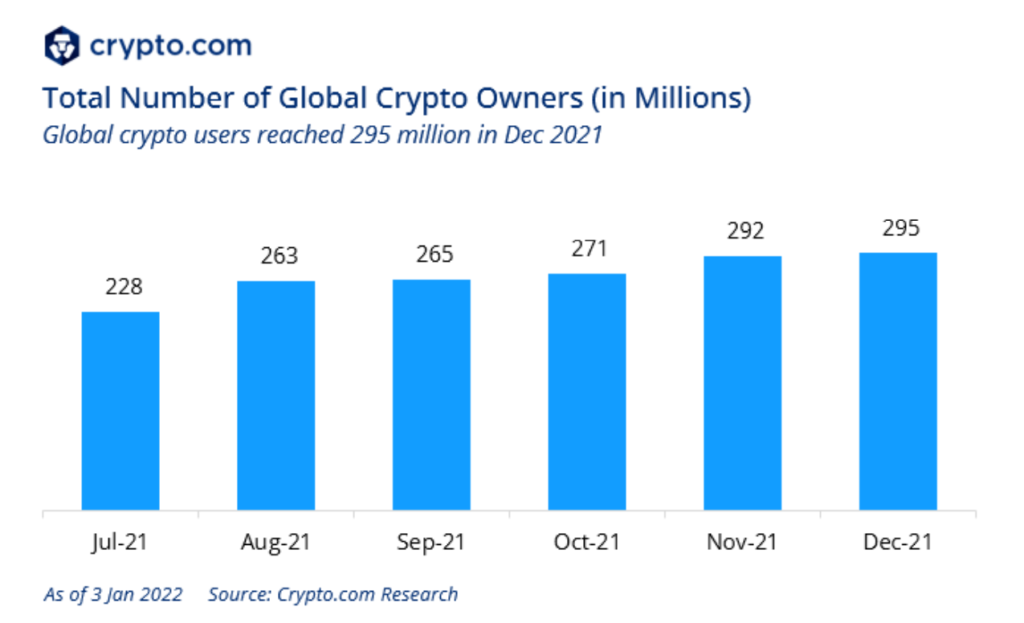A report on the motivations, activities, and preferences of cryptocurrency users around the world.
ShivX Research (Maharshi)
January 28th, 2021
January 28th, 2021,

Introduction to the survey
This analysis is the first of its kind, with a global reach and a focus on crypto retail customers. It investigates data from over 61,000 crypto users around the world, giving insight into their motivations, habits, and preferences.
Users have near-unanimous confidence in cryptocurrency (97 percent), according to the data. More than half of users (52 percent) regard crypto investing to be a source of income rather than a hobby; 15% of users consider bitcoin to be their primary source of income. Meanwhile, the top three reasons people invest in crypto are (1) long-term investing plan (55 percent), (2) skepticism of the current financial system (38 percent), and (3) short-term trading opportunities (31 percent).
Cryptocurrency retail investment is on the rise all across the world. As cryptocurrencies have been more widely accessible through a variety of channels – including Paypal, LocalBitcoins, Grayscale, Binance, and others – it is becoming increasingly necessary to understand the most common user-profiles and their preferences. There hasn’t been an impartial examination into the motivations, actions, and tastes of these rising audiences on a global scale, other than anecdotal tales.
That is why the Global Crypto User Index was created.
Its goal was to explore questions surrounding the respondents..
- .. Demographics
- .. Attitude
- .. Financial Involvement
- .. Adoption
- .. Ideology.
Other key insights from the report include:
- Bitcoin continues to be the most popular cryptocurrency: BTC is held by 65 percent of users who possess any cryptocurrency. 30% of bitcoin owners put 1-20% of their cryptocurrency holdings into bitcoin.
- Despite the fact that most cryptocurrencies are holed (39 percent), users also use them for staking and lending (22 percent), as well as payments (11 percent). While utilizing crypto as a medium of exchange may not be the most essential use case (21 percent), actual usage (38 percent) indicates that crypto is increasingly taking on the role of money.
- The most popular place to store cryptocurrency is on exchanges, where 60% of customers hold their digital assets. When it comes to choosing an exchange platform, users rank security (28 percent), UI/UX (25 percent), and accessible trading pairs (23 percent) as the most essential aspects. **
- Users are more likely to buy cryptocurrency with disposable funds (63 percent). Users in the Netherlands are the least likely to buy cryptocurrency with borrowed money (3%), whilst users in China are the most likely (23 percent).
- Defi is gaining traction: Sixty-six percent of all users claimed they use Defi programs. Decentralized applications appear to be most popular in Southeast Asia, where more than 54% of users reported using them (dApps).
- Users believe in the freedom of money: lower institutional trust correlates with higher crypto confidence: 17 of the 20 markets studied have less than 50% trust in local institutions.
Distribution of the survey
The survey was distributed via a web-based questionnaire for a global audience, as well as a dedicated survey for the Chinese market, in eight different languages (English, Spanish, Russian, Turkish, Chinese, Vietnamese, German, and Dutch).
The following channels were used in that order:
- Social networks (e.g., Twitter, Telegram, Kakaotalk, VK, WeChat)
- Reddit forums
- Direct emails to Binance.com users
- Banners on Binance.com and CoinMarketCap.
Methodology of the survey
All of the replies were grouped into countries and markets by region. Some countries may appear to be greatly over-represented (e.g., Turkey), while others may appear to be severely under-represented (i.e., Japan). Importantly, the crypto ecosystem’s underlying flaw is the lack of a distinct sample frame. It refers to the total population, from which a sample of people is being polled. As a result, a sample frame is always necessary to determine how representative the polled group is and can be utilized to assure the survey research results’ external validity. The sample frame can be calculated using proxy data that is theoretically available, such as:
- On-chain analytics
- Previous surveys
- Publicly reported KYC information
- Internal user data
- Google Analytics traffic.
It was able to balance the survey population by utilizing extra data that was not included in the survey data. This type of “post-stratification” assures that insight is valid not only for the sample in issue but also for the full community of active crypto users.
All countries were divided into 20 markets based on this idea. The market categorization may appear arbitrary at times, but it was.
- .. always informed by respectively available sample size,
- .. as local as possible, but as global as required,
- .. further informed by the need for two types of respondents.

